Waste Disposal in St Jamess
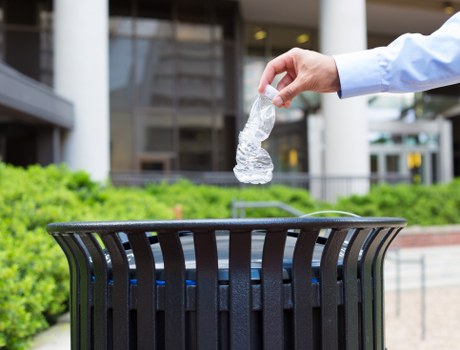
Effective waste disposal is crucial for maintaining a clean and healthy environment in St Jamess. Proper management of waste not only keeps the community aesthetically pleasing but also protects public health and the local ecosystem.
St Jamess has implemented various waste disposal systems to handle the increasing amount of waste generated by its residents and businesses. These systems are designed to be efficient, sustainable, and environmentally friendly.
Understanding the waste disposal options available can help residents make informed decisions about how they dispose of their waste responsibly.
Types of Waste in St Jamess
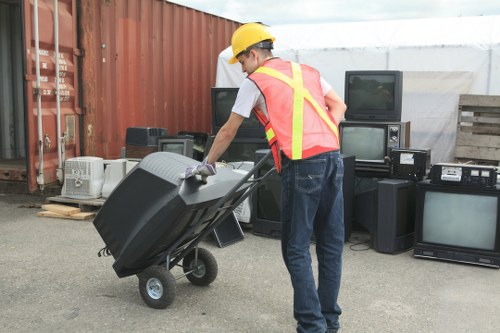
Waste can be categorized into several types, each requiring different disposal methods. In St Jamess, the primary types of waste include:
- Residential Waste: Everyday waste generated by households, such as kitchen scraps, packaging materials, and household items.
- Commercial Waste: Waste produced by businesses, including offices, restaurants, and retail stores.
- Industrial Waste: Waste from manufacturing processes, which may include hazardous materials.
- Hazardous Waste: Waste that poses a significant risk to health or the environment, such as chemicals, batteries, and electronics.
Proper segregation and disposal of these waste types are essential to minimize environmental impact and promote recycling and reuse.
Each category requires specific handling procedures to ensure that waste is managed safely and efficiently.
Residents and businesses are encouraged to familiarize themselves with these categories to participate effectively in St Jamess' waste disposal programs.
Waste Disposal Methods
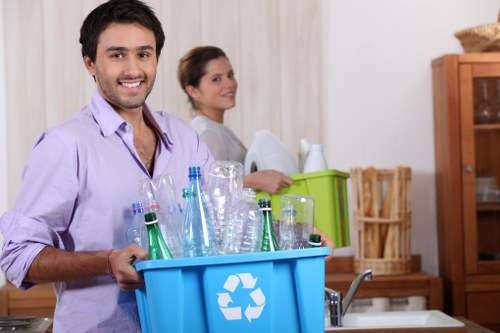
St Jamess employs several waste disposal methods to manage waste effectively. These methods include:
- Landfill Disposal: Waste is transported to designated landfill sites where it is buried and managed to prevent environmental contamination.
- Recycling: Materials such as paper, glass, plastic, and metals are collected and processed to create new products, reducing the need for raw materials.
- Composting: Organic waste is decomposed to produce nutrient-rich compost, which can be used to improve soil quality in gardens and agricultural land.
- Incineration: Waste is burned at high temperatures, reducing its volume and sometimes generating energy in the form of electricity or heat.
Each method has its advantages and challenges, and St Jamess continuously evaluates and improves these methods to ensure sustainability and efficiency.
Community participation is crucial in the success of these waste disposal methods, as it relies on proper waste separation and responsible disposal practices.
By utilizing a combination of these methods, St Jamess aims to minimize the environmental footprint of its waste management system.
Recycling Programs in St Jamess
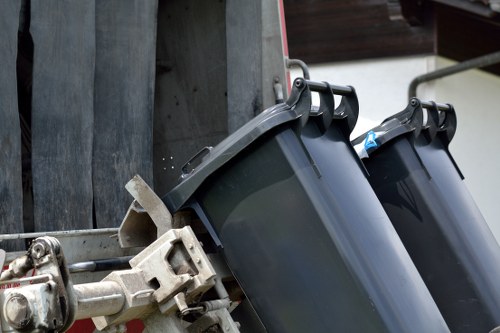
Recycling is a key component of St Jamess' waste management strategy. The community offers several recycling programs to encourage residents to recycle effectively:
- Paper and Cardboard Recycling: Residents can dispose of newspapers, magazines, cardboard boxes, and office paper in designated recycling bins.
- Plastic Recycling: Various types of plastics, including bottles, containers, and packaging materials, are collected separately for recycling.
- Metal Recycling: Aluminum cans, steel cans, and other metal items are gathered for processing and reuse.
- Glass Recycling: Glass bottles and jars are recycled to produce new glass products, reducing the need for raw materials.
- Electronic Waste Recycling: Old electronics, such as computers, TVs, and phones, are collected to prevent hazardous materials from entering landfills.
These programs are supported by convenient collection points and regular recycling pickups, making it easier for residents to participate.
Public education campaigns also help raise awareness about the importance of recycling and how to do it correctly.
By increasing recycling rates, St Jamess reduces the amount of waste sent to landfills and conserves natural resources.
Hazardous Waste Management
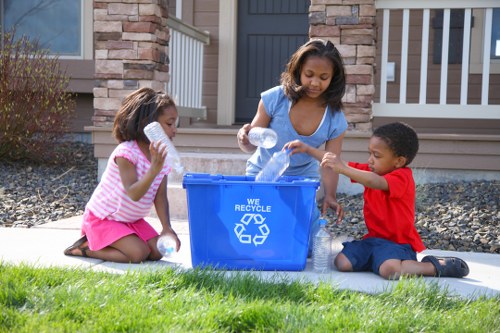
Managing hazardous waste requires special attention and procedures to ensure safety and environmental protection. St Jamess has established protocols for handling hazardous materials:
- Collection Events: Periodic events are organized where residents can safely dispose of hazardous waste items such as batteries, paint, and chemicals.
- Designated Disposal Facilities: Specific facilities are equipped to handle and process hazardous waste, preventing contamination of soil and water sources.
- Regulatory Compliance: Waste disposal practices adhere to local and national regulations to ensure that hazardous materials are managed responsibly.
Proper disposal of hazardous waste is essential to prevent accidents, health issues, and environmental degradation.
Residents are encouraged to identify and separate hazardous waste from regular trash to facilitate safe disposal.
By prioritizing hazardous waste management, St Jamess protects its community and natural surroundings from potential harm.
Community Involvement and Education

Community involvement is vital for the success of waste disposal programs in St Jamess. Engaging residents through education and participation fosters a culture of responsibility and sustainability.
- Educational Workshops: Regular workshops are held to educate residents about effective waste segregation, recycling techniques, and the benefits of proper waste disposal.
- Volunteer Programs: Community members can participate in cleanup drives, recycling initiatives, and other volunteer activities that support waste management efforts.
- Awareness Campaigns: Public campaigns using various media platforms inform residents about the importance of reducing waste and adopting eco-friendly practices.
These initiatives empower individuals to take an active role in maintaining the cleanliness and sustainability of St Jamess.
Collaborative efforts between the local government, businesses, and residents ensure that waste disposal systems are effective and continuously improving.
By fostering a sense of community responsibility, St Jamess can achieve its waste management goals and promote a healthier environment for all.
Benefits of Effective Waste Disposal

Implementing effective waste disposal systems brings numerous benefits to St Jamess, including:
- Environmental Protection: Proper waste management reduces pollution, conserves natural resources, and protects wildlife and ecosystems.
- Public Health: Minimizing waste accumulation prevents the spread of diseases and reduces health risks associated with improper disposal.
- Aesthetic Improvement: A clean environment enhances the visual appeal of the community, making it more attractive for residents and visitors.
- Economic Savings: Efficient waste disposal can lower costs associated with waste management and promote recycling industries, creating job opportunities.
- Resource Conservation: Recycling and reuse of materials decrease the demand for new resources, promoting sustainability.
These benefits collectively contribute to a higher quality of life for the residents of St Jamess.
Investing in waste management infrastructure and education yields long-term advantages for the entire community.
By prioritizing effective waste disposal, St Jamess sets a positive example for other communities to follow.
Challenges in Waste Disposal

Despite the advancements, St Jamess faces several challenges in waste disposal:
- Increasing Waste Generation: As the population grows, the amount of waste produced also rises, putting pressure on existing waste management systems.
- Recycling Contamination: Improper segregation of recyclable materials can lead to contamination, making recycling processes less efficient.
- Limited Landfill Space: Available land for waste disposal is finite, necessitating the exploration of alternative disposal methods.
- Public Participation: Ensuring consistent and widespread participation in waste disposal programs requires ongoing education and motivation.
- Financial Constraints: Funding waste management initiatives and infrastructure improvements can be challenging, especially in times of economic strain.
Addressing these challenges requires collaborative efforts from the government, businesses, and residents of St Jamess.
Innovative solutions and continuous improvement are essential to overcome obstacles and enhance waste disposal systems.
By tackling these challenges head-on, St Jamess can maintain an effective and sustainable waste management framework.
Technological Innovations in Waste Management

Embracing technological advancements can significantly improve waste disposal practices in St Jamess. Some of the innovations being explored include:
- Smart Waste Bins: Equipped with sensors, these bins monitor waste levels and optimize collection schedules, reducing operational costs and environmental impact.
- Automated Sorting Systems: Advanced machinery can efficiently segregate waste materials, enhancing the accuracy and speed of recycling processes.
- Waste-to-Energy Technologies: Converting waste into energy not only reduces landfill usage but also provides a sustainable energy source for the community.
- Mobile Applications: Apps that inform residents about waste collection schedules, recycling guidelines, and provide incentives for proper waste disposal.
Integrating these technologies can streamline waste management operations and increase the effectiveness of disposal methods.
St Jamess is committed to adopting innovative solutions that align with its sustainability goals and improve the quality of life for its residents.
Continuous investment in technology ensures that waste disposal systems remain modern, efficient, and capable of meeting future demands.
Local Regulations and Policies

St Jamess has established a comprehensive set of regulations and policies to govern waste disposal practices:
- Waste Segregation Laws: Mandates that residents separate their waste into designated categories for proper handling and recycling.
- Recycling Targets: Sets specific goals for recycling rates, encouraging continuous improvement and accountability.
- Penalties for Non-Compliance: Implements fines and other penalties for individuals and businesses that do not adhere to waste disposal regulations.
- Incentive Programs: Offers rewards and benefits for those who actively engage in recycling and waste reduction initiatives.
These regulations are designed to promote responsible waste management and ensure that St Jamess meets its environmental objectives.
Regular reviews and updates to policies help address emerging challenges and incorporate best practices in waste disposal.
Community input is valued in shaping these regulations, ensuring that they are effective and widely supported.
Impact of Waste Disposal on the Environment

Improper waste disposal can have severe consequences for the environment, including:
- Pollution of Water Bodies: Leachate from landfills can contaminate groundwater and surface water, affecting aquatic life and human health.
- Air Pollution: Incineration and decomposition of waste release greenhouse gases and other pollutants into the atmosphere.
- Soil Degradation: Accumulation of waste can degrade soil quality, impacting agriculture and natural vegetation.
- Wildlife Harm: Animals can ingest or become entangled in improperly disposed waste, leading to injury or death.
- Climate Change: Waste decomposition contributes to the emission of methane, a potent greenhouse gas that exacerbates climate change.
By managing waste effectively, St Jamess mitigates these environmental impacts, safeguarding natural resources and promoting ecological balance.
Adopting sustainable waste disposal practices is essential for preserving the environment for future generations.
Community engagement and responsible behavior are critical in minimizing the environmental footprint of waste disposal.
Future Plans for Waste Management in St Jamess

St Jamess is committed to continually improving its waste management systems to meet future demands and sustainability goals. Some of the future plans include:
- Expanding Recycling Facilities: Increasing the capacity and capabilities of recycling centers to handle more materials and improve processing efficiency.
- Implementing Zero Waste Initiatives: Striving to eliminate landfill waste by promoting recycling, composting, and waste reduction strategies.
- Enhancing Public Transportation for Waste: Developing more efficient routes and methods for waste collection to reduce fuel consumption and emissions.
- Promoting Circular Economy Models: Encouraging the reuse and repurposing of materials to create a more sustainable economic system.
- Investing in Renewable Energy: Utilizing waste-to-energy technologies to generate renewable energy and reduce dependence on fossil fuels.
These initiatives aim to create a more resilient and sustainable waste management framework in St Jamess.
Collaboration with experts, stakeholders, and the community is essential to realize these plans and achieve long-term environmental sustainability.
By embracing innovation and proactive planning, St Jamess positions itself as a leader in effective waste disposal and environmental stewardship.
Top 15 Nearby Areas to St Jamess for Waste Disposal

St Jamess is surrounded by several nearby areas that also contribute to and benefit from its waste disposal systems. Here are the top 15 nearby areas:
- Pineville: Located just 5 miles north, Pineville shares recycling facilities with St Jamess, enhancing regional waste management.
- Maple Ridge: 7 miles east, Maple Ridge benefits from St Jamess' composting programs, reducing its organic waste.
- Oakwood: Situated 6 miles west, Oakwood collaborates with St Jamess on hazardous waste disposal initiatives.
- Riverdale: 8 miles south, Riverdale utilizes St Jamess' landfill site, ensuring proper waste burial.
- Elm Street: 4 miles southeast, Elm Street participates in joint recycling drives with St Jamess.
- Cedar Falls: 9 miles northwest, Cedar Falls adopts waste-to-energy solutions developed in St Jamess.
- Birchwood: 3 miles northeast, Birchwood enhances its waste segregation practices using St Jamess' guidelines.
- Willow Springs: 10 miles southwest, Willow Springs benefits from shared waste collection services.
- Cherry Grove: 2 miles west, Cherry Grove participates in local cleanup events organized by St Jamess.
- Spruce Hill: 11 miles east, Spruce Hill leverages St Jamess' recycling technology for better waste processing.
- Willowbrook: 12 miles north, Willowbrook engages in educational workshops hosted by St Jamess on waste management.
- Hemlock: 13 miles south, Hemlock collaborates on regional hazardous waste treatment facilities.
- Ashland: 14 miles northwest, Ashland uses St Jamess' composting facilities for its community gardens.
- Juniper: 15 miles southeast, Juniper integrates St Jamess' smart waste bin technology into its own waste collection system.
- Laurel Heights: 16 miles southwest, Laurel Heights benefits from shared waste reduction programs initiated by St Jamess.
These neighboring areas work closely with St Jamess to ensure comprehensive and efficient waste management across the region.
Collaboration among these communities promotes shared resources, knowledge, and technology, enhancing overall waste disposal effectiveness.
By fostering regional partnerships, St Jamess and its nearby areas can achieve greater sustainability and environmental protection.
Conclusion

Waste disposal in St Jamess is a multifaceted effort that involves the community, local government, and neighboring areas. By implementing effective waste management strategies, promoting recycling, and embracing technological innovations, St Jamess strives to maintain a clean and sustainable environment.
Challenges such as increasing waste generation and recycling contamination are addressed through collaborative efforts and continuous improvement. The benefits of these waste disposal practices extend beyond environmental protection, contributing to public health, economic savings, and enhanced community well-being.
Looking ahead, St Jamess is dedicated to advancing its waste management systems to meet future demands and sustainability goals. Through education, community involvement, and strategic planning, St Jamess sets a positive example for other communities striving for effective waste disposal and environmental stewardship.
Frequently Asked Questions
1. What are the main types of waste managed in St Jamess?
St Jamess manages residential, commercial, industrial, and hazardous waste, each requiring specific disposal methods to ensure safety and environmental protection.
2. How can residents participate in the recycling programs?
Residents can participate by segregating their waste into designated categories, using provided recycling bins, and following the community's recycling guidelines.
3. What should I do with hazardous waste items like batteries and chemicals?
Hazardous waste items should be taken to designated disposal facilities during scheduled collection events to ensure they are handled safely and responsibly.
4. Are there any penalties for improper waste disposal in St Jamess?
Yes, there are penalties and fines for individuals and businesses that do not comply with St Jamess' waste disposal regulations to encourage proper waste management practices.
5. What future plans does St Jamess have for improving waste disposal?
Future plans include expanding recycling facilities, implementing zero waste initiatives, adopting waste-to-energy technologies, and enhancing public transportation for waste collection to create a more sustainable waste management system.